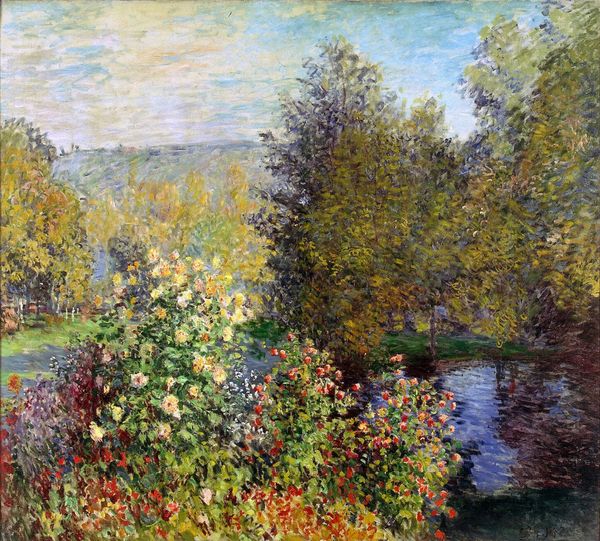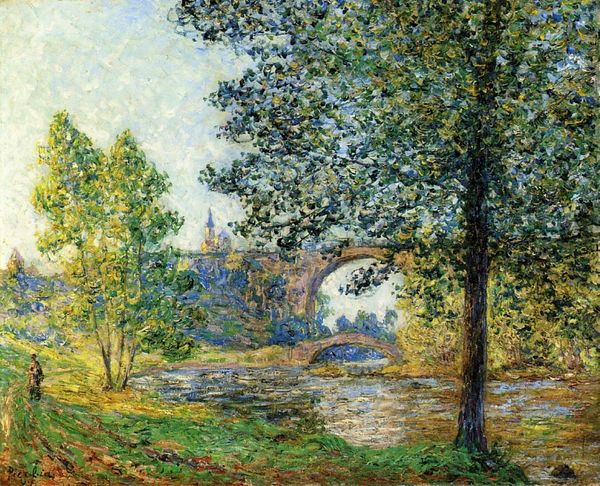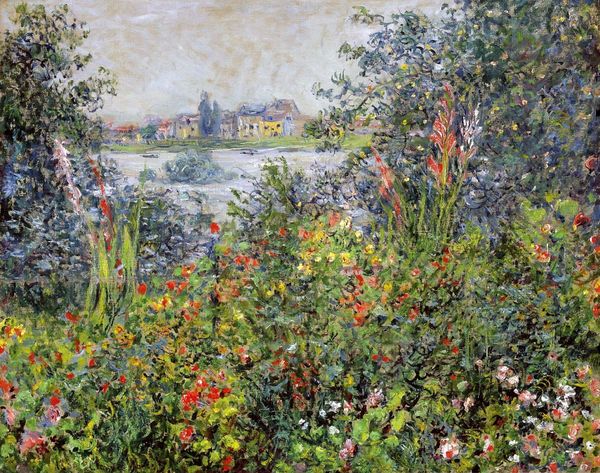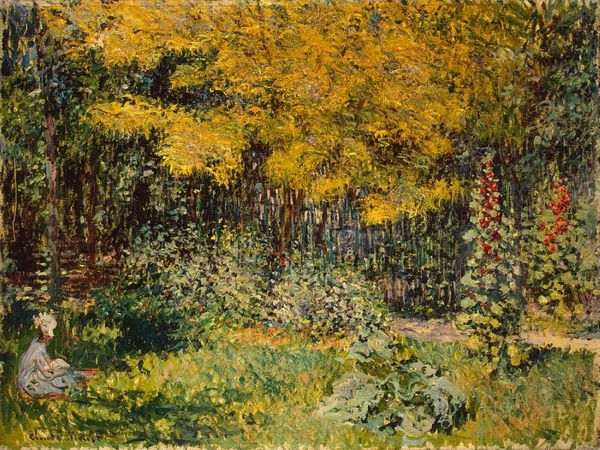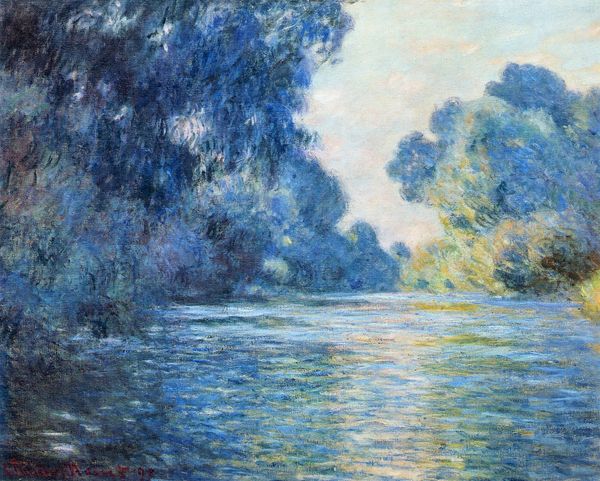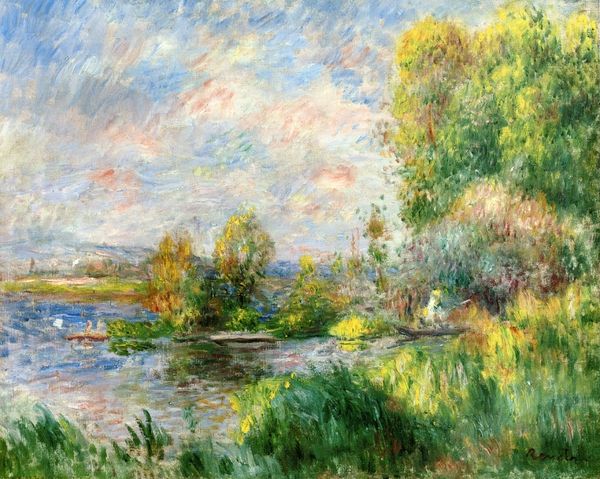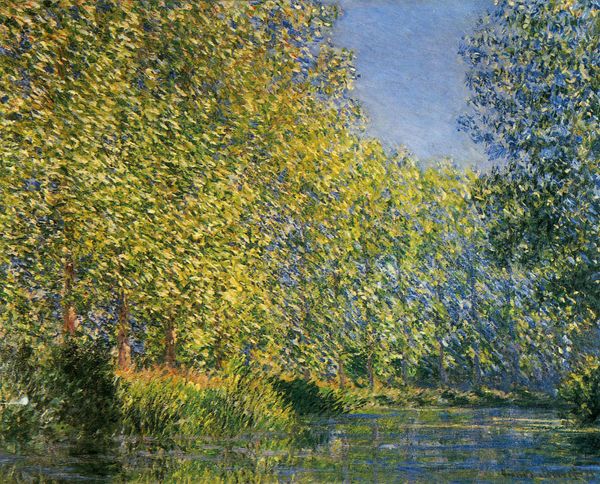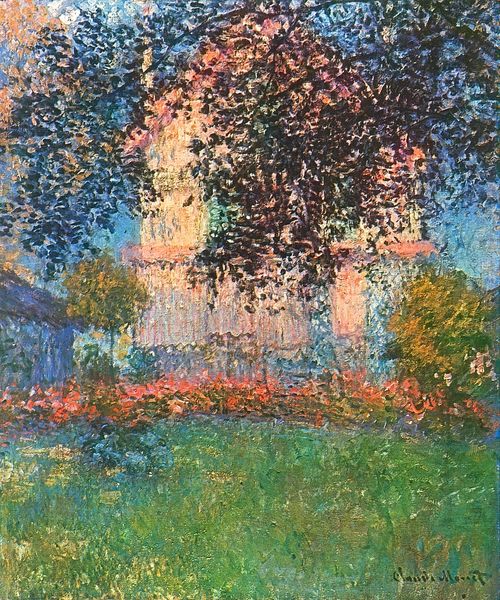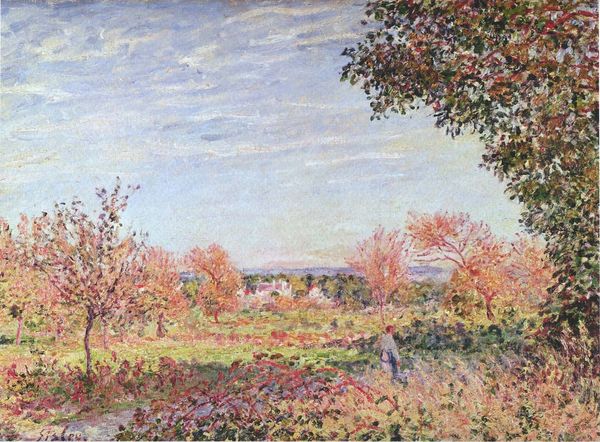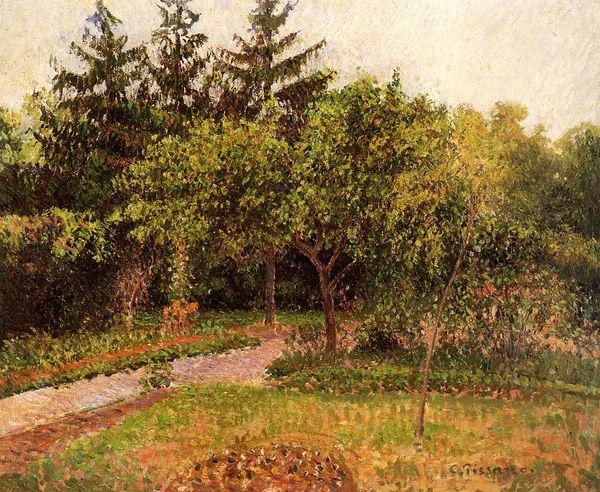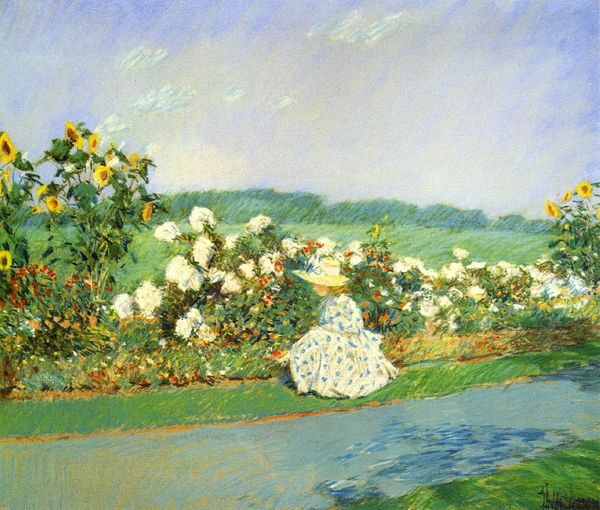
painting, plein-air, oil-paint, impasto
#
impressionist
#
garden
#
painting
#
impressionism
#
plein-air
#
oil-paint
#
landscape
#
impressionist landscape
#
nature
#
impasto
#
realism
Copyright: Public domain
Editor: This is Claude Monet's "Roses in the Hoshede's Garden at Montgeron," painted in 1876. It's an oil painting, and seeing it here, I'm struck by how tactile it feels, like you could almost reach out and touch the blooms. What do you see when you look at this piece? Curator: Well, it’s intriguing to consider this work through a materialist lens. Think about the physical process – Monet, en plein air, mixing his pigments, applying thick impasto to the canvas. The materiality itself becomes a record of his labor. How do you think the act of painting outdoors, directly confronting the elements, influenced the final product, the texture of this artwork? Editor: That’s a great point! The roughness really does speak to the environment. Does the subject matter itself, a garden, connect to the socio-economic context of the time? Curator: Absolutely. Consider the rise of the middle class and their aspirations for leisure and cultivation, both literally and figuratively. Monet’s gardens weren’t just pretty scenes; they were carefully constructed spaces, demanding resources and labor. The very act of depicting them highlights these investments in cultivated leisure. To create those textural surfaces he applied generous amounts of expensive oil paints; in essence it immortalizes nature through the new commodities of leisure and mass production. What does that juxtaposition suggest to you? Editor: I hadn’t thought about it that way. The “naturalness” of the scene is actually very constructed, a product of wealth and available materials. It challenges the traditional ideal of art being somehow separate from the world of labor. Curator: Precisely! We see that tension between nature and industry reflected even in the paint itself. The painting becomes a document of its own making, revealing the underlying conditions of its existence. I found a completely new way of observing Monet today. Editor: Me too! Seeing the brushstrokes as evidence of labor gives the piece so much more depth.
Comments
No comments
Be the first to comment and join the conversation on the ultimate creative platform.
